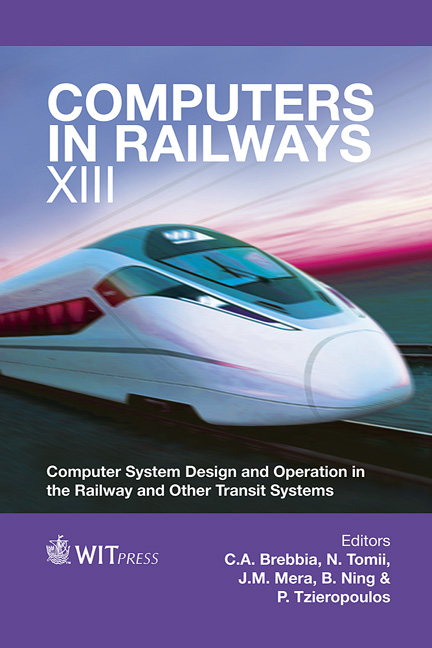Development Of An Energy Efficient Train Traffic Control System For Saving Electricity
Price
Free (open access)
Transaction
Volume
127
Pages
12
Page Range
499 - 510
Published
2012
Size
2661 kb
Paper DOI
10.2495/CR120421
Copyright
WIT Press
Author(s)
M. Miyoshi, T. Takeba & M. Miyatake
Abstract
Although rail transportation is conventionally considered to be environmentallyfriendly, currently research is being carried out globally to find ways to improve energy-saving in rail transportation. Development of an energy management system for railways and new transport systems including the BRT (Bus Rapid Transit) system has begun. The railway energy management system manages and controls the use of energy for transportation as well as train operation. An EE (energy efficient) train traffic control system is being developed in order to reduce energy consumption in train traffic operation. This system is mainly useful for urban railways. The control system reduces consumed running energy by assigning several seconds of the scheduled margin times at platforms to inter-stations. While taking care about delay of the trains, the control system adjusts the arrival-and-departure time at stations without making passenger aware of the difference from the usual. The following methods can be considered in utilization; 1) drivers judge and lengthen the running time appropriately according to the train operation condition of routes; 2) the ground operation control device grasps train traffic conditions and decides the arrival time at the next station and then orders the time to each train using a ground-vehicle transmission system, while drivers operate according to the guidance by the on-board driving assistance equipment; 3) trains run with automatic train operation equipment according to the order from the ground operation control device. By computer simulation for typical urban transport lines, the evaluation of an EE train traffic control algorithm was carried out. As a result, it was confirmed
Keywords
energy management, train traffic control, margin times, adjustment of departure and arrival time, driving assistance, ATO (Automatic Train Operation), computer simulation





